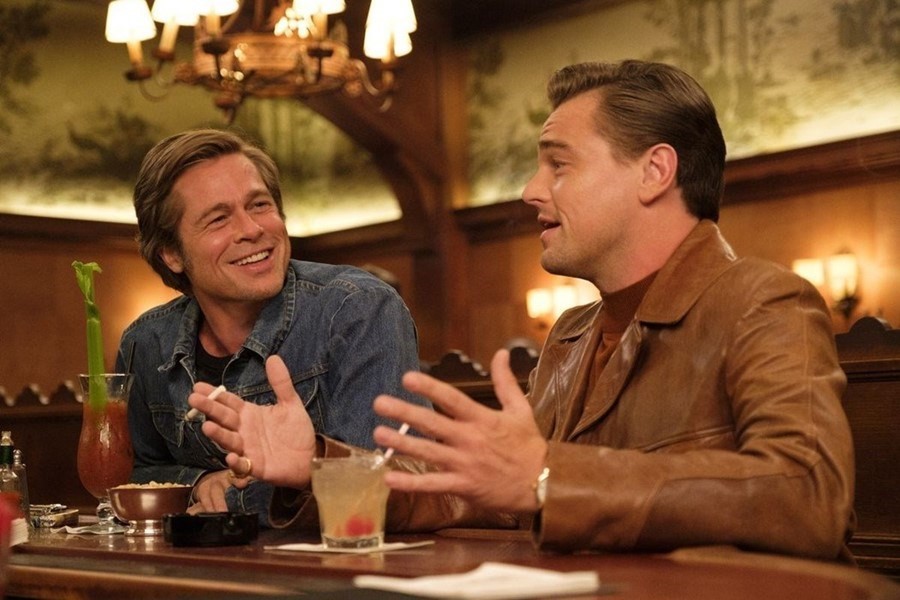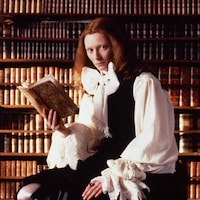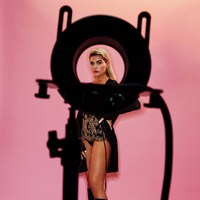As the fourth wall-pushing 00s romcom America’s Sweethearts turns 20, we look back at the best movies about... movies
Hollywood has a real penchant for self-mythologising, producing movie after movie about the very act of moviemaking itself. Whether you’re looking at the silent film era, the golden age of cinema, all the way through to modern rom-com bonanzas, show business has found a way to fit the film within a film theme to whatever style happens to be de rigueur. Are you dizzy yet?
This format can reel between hero worship or caustic critique, glorious awe or moody introspection. Unlike a matryoshka doll, the nested narratives don’t shrink as they’re revealed, but rather add intricate intersecting layers of meaning.
But then there’s America’s Sweethearts, a film that just turned 20, which thrums along at peak early 00s romcom energy thanks to the blithe John Cusack and the perpetually charming Julia Roberts. It represents the filmmaking film’s entry into an era of light irony and the cusp of the VHS-DVD divide, pushing the meta boundary while still honouring the happy ending. There’s something satisfying about pulling out the fourth wall only to find another one waiting right behind it. While some films tell the story of how other movies came to be (think Ed Wood or The Disaster Artist), in honour of America’s Sweethearts’ 20th anniversary, we’ve put together a list of ten films that revel in that fictitious layered complexity.
AMERICA’S SWEETHEARTS (2001)
America’s Sweethearts is the kind of film that can build up a press junket as the ultimate high-stakes event and play off tabloid tropes for laughs and romantic resonance alike. Co-written by and co-starring Billy Crystal, the cozy, self-reflexive romantic-comedy centers on a broken movie star marriage between John Cusack’s Eddie and Catherine Zeta-Jones’ Gwen. While their publicist (Billy Crystal) tries to promote their final film together by pretending they’re still together. Naturally, when Eddie falls for Gwen’s sister (Julia Roberts in a ball of awkward comedic tension), hijinks ensue. Add in some stereotypes (Hank Azaria as the Latin lover, Christopher Walken as the eccentric director), and the film feels monumentally situated in the moment before Hollywood pushed deeper into grit and realism, the end of an era for Roberts’ run of iconic romantic-comedies. The lighthearted skewering of a genre from within itself seals the era in a meta box.
ADAPTATION (2002)
Attempting to summarise the zigzagging stratified wildness that is Adaptation feels like a fool’s errand. Is it a movie about movies, about the movie business, about writing, about writers, about the concept of fiction, about orchid thieves, about jealousy? You could ask Charlie Kaufman – either the one who wrote Adaptation, or the one in Adaptation played by Nicolas Cage, who is hired to adapt Susan Orlean’s The Orchid Thief into a film. Or you could ask his fictional twin brother, Donald, also played by Cage. A psychological thriller in more senses than one, Adaptation amps the meta quotient to a degree unlike the rest of this list, and yet remains ripe for rewatches year after year.
BOWFINGER (1999)
Who knows the inner workings of Hollywood better than the stars themselves? Like Billy Crystal’s turn penning and co-starring in America’s Sweethearts, Steve Martin pulled double duty for Bowfinger, a film about B movies, a mischievous producer, and harebrained schemes. Eddie Murphy doubles up here too, playing in-demand and unstable star Kit Ramsey, and the gawky and brace-faced lookalike Jiff Ramsey. At the film’s start, Martin’s Bobby Bowfinger attempts to make his dream film, Chubby Rain, by having his Z-list cast walk up to Kit and run lines with the unsuspecting actor for the hidden cameras, but the bumbling Jiff proves a suitable replacement. Plenty of films have glorified filmmaking, but giving a platform to the sweaty eagerness of those not quite on Hollywood’s top tier gives Bowfinger a surprising depth beneath the laughs.
SCREAM 3 (2000)
As early as 1996, Scream was introducing the concept of meta storytelling to the wider horror genre fanbase. And after that first movie became a smash success, the following year’s sequel added in an extra layer, opening with two characters attending the screening of Stab, an in-world film based on the events of the first Scream. For Scream 3, the Stab franchise’s pace accelerates, and the set of Stab 3 becomes the locus of the Ghostface mayhem. In a brilliant way to force “Final Girl” Sidney Prescott to face her past, the killer terrorises her through an exact replica of the house where it all started. The spoiled auteur, the sleazy producer, the diva star, the noir-obsessed police officer – it’s all here.
BE KIND REWIND (2008)
Making films isn’t always glitz and glam. Sometimes it’s cardboard cutouts and duct tape. In Michel Gondry’s delightfully esoteric Be Kind Rewind, Mos Def and Jack Black find themselves in need of remaking all of the various films in the local video rental shop on the cheap. Black’s boundless enthusiasm and Mos Def’s soft-spoken warmth power the film, matched perfectly by the awe and wonder that Gondry wholly captures. Not only does their shop’s future rely on the duo’s ability to replicate classic films (or “swede” them, as if they were imported from Sweden), but the filmmaking process brings the entire neighbourhood together.
ONCE UPON A TIME IN HOLLYWOOD (2019)
An adoration and meta commentary on the history of film runs deep through Quentin Tarantino’s filmography, but none of his work addresses the industry as directly as his latest, Once Upon a Time in Hollywood. The story of a semi-washed Western actor and his stuntman pal somehow interweaves with a true-story-adjacent look at the tragedy of Sharon Tate and her intersection with the Manson family. Margot Robbie’s Tate and Leonardo DiCaprio’s Rick Dalton intersect in rising and falling arcs, the former reveling in the ability to see herself on screen as she rises in Hollywood and the latter holding onto his professional sanity and career by his toes. And they intersect, as one might suspect from a Tarantino film, in a grand burst of violence that leaps from the screen, putting the real filmmaking front and centre.
HAIL, CAESAR! (2016)
The little-discussed truth of filmmaking is just how much of the process doesn’t have anything to do with acting or cameras at all. And while figuring out a way to gather enough money to spring a movie star who has been kidnapped by a group of communist screenwriters, the Coen Brothers cover that particular version of the Hollywood story and make it as quirkily approachable and honest as any story about a workplace. The all-star cast includes George Clooney, Josh Brolin, Ralph Fiennes, Scarlett Johansson, Tilda Swinton, Channing Tatum, and Frances McDormand, all in stunning 1950s attire – a reminder that even the heavily romanticised golden era of Hollywood was full of egotists and doofuses, no matter how well-dressed. Like Barton Fink before it, Hail, Caesar! finds the Coens digging into the manic obsession that comes with life in show business.
8 ½ (1963)
“I wanted to make an honest film with no lies of any kind, a film that could be useful to everyone… Where did I go wrong?” asks Guido Anselmi (portrayed by Marcello Mastroianni) in the remarkable and contemplative 8 ½. The legendary Fellini film tells the story of Guido’s “director’s block,” as he attempts to make a sci-fi film that begins to feel more autobiographical by the minute. Equally adept at narrow camera shots that detail the director’s interiority and wide-angle set pieces, the complex and imaginative classic honors the act of filmmaking even as it feels as if the practice is tearing its protagonist’s mind apart.
DAY FOR NIGHT (1973)
Auteur Francois Truffaut both directed and appeared in the 1973 classic, Day for Night (or La Nuit Americaine), a fitting choice as the film digs into the minutiae that comes along with the intense schedule and interpersonal relationships on a film set. While Meet Pamela, the in-film project that Truffaut’s character is directing, may feel melodramatic and silly, the quirks of the actors Jean-Pierre Leaud’s Alexandre and pained personal life of Jacqueline Bisset’s Julie crowd the Day for Night set with the heartbreak and emotional depth. When Meet Pamela is thrown off by all the romance, sex, scandal, and conflict, Truffaut makes it feel both captivatingly heartbreaking and completely par for the course for the business.
SINGIN’ IN THE RAIN (1952)
It’s ironic that a movie with songs lodged so deep into the brains of even those that haven’t seen it has a plot so focused on the end of the silent era. More than a string of musical numbers, Singin’ in the Rain details a film production’s change over from the epic and silent Dueling Cavalier to the musical Singing Cavalier – and just what happens when one of the film’s stars is revealed to have a terrible voice right when she needs it most. Gene Kelly’s rain-soaked song and dance, Donald O’Connor’s face-plant into a brick wall, and Kelly, O’Connor, and Debbie Reynolds hot-stepping through “Good Morning” – it’s all a sublime showcase of film’s capacity for spectacle, with some of the best dancing you’ll find.



